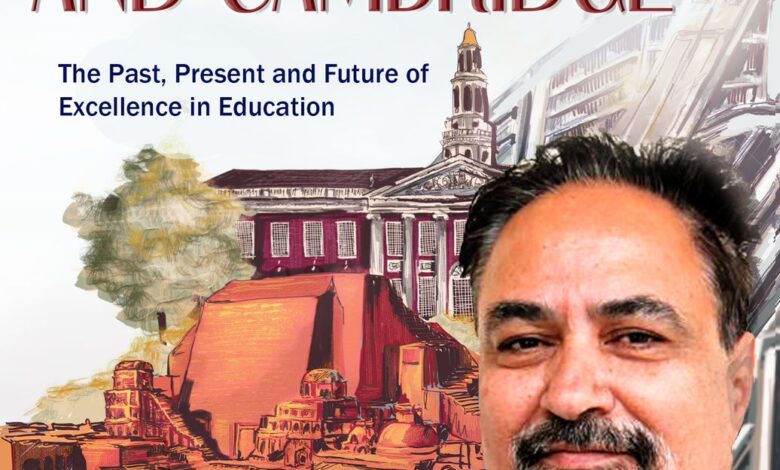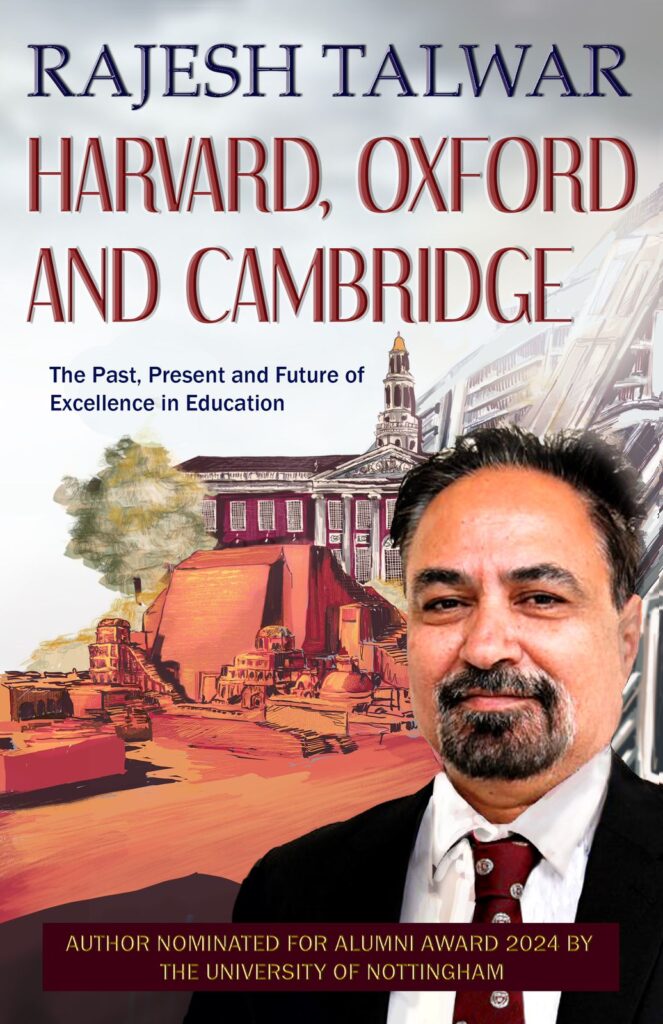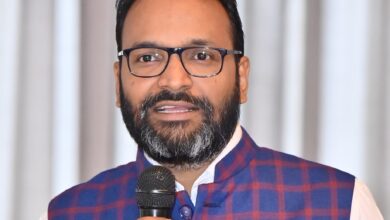Rajesh Talwar best-selling author unveils HARVARD, OXFORD AND CAMBRIDGE

 Rajesh Talwar, former UN official current consultant, lawyer, and best-selling author unveils HARVARD, OXFORD AND CAMBRIDGE: THE PAST PRESENT AND FUTURE OF EXCELLENCE IN EDUCATION, a thought-provoking book that delves into education reform, supporting the government’s aim of high-quality education and offering guidance for policymakers to enhance India’s global education standards.
Rajesh Talwar, former UN official current consultant, lawyer, and best-selling author unveils HARVARD, OXFORD AND CAMBRIDGE: THE PAST PRESENT AND FUTURE OF EXCELLENCE IN EDUCATION, a thought-provoking book that delves into education reform, supporting the government’s aim of high-quality education and offering guidance for policymakers to enhance India’s global education standards.
Book excerpt – Pg 199-202
Now India does have proper government-authorised ranking systems following a proper methodology. The first important ranking system in India is the National Institute Ranking Framework (NIRF), which was first introduced in It is a ranking methodology adopted by the Ministry of Education, Government of India, to rank institutions of higher learning according to various parameters such as quality of research, teaching, peer perception and so on. The system has come in for criticism on various grounds, but it is early days yet, and the good news is that we at least finally have a system that will hopefully be fine-tuned and will improve with time.
A second ranking system exists under the UGC. This is referred to as the National Assessment and Accreditation Council (NAAC) ranking system. The Council provides eight grades to institutions of higher learning: A++, A+, A, B++, B+, B, C and D. These grades are awarded only after a detailed investigation.
There are education experts who believe that the NAAC ranking system is superior because it is in-house as it exists under the UGC. However, in truth the NIRF and the NAAC ranking systems should be considered as complementary and not as rivals.
Although the rankings of colleges and universities by the above two systems can be accessed by domestic and overseas students, they are not publicised sufficiently. The budget of the NIRF is three crores, and this may be increased so that it can publish and publicise its findings in booklets and elsewhere.
Word of mouth is important for students. Local Indian students will know, for example, that the mass communication course at JamiaMilliaIslamia University is highly regarded, or that a certain engineering institute in a southern state is highly regarded.
Meanwhile, a certain private university in India may simply claim to have such and such a national ranking on the basis of the results of surveys published by a magazine. Around admission time, many private universities take out full-page or half-page advertisements in national dailies or advertise on television.
Even the local cinema hall in Noida that I visit when I am in India carries an advertisement for a school. It includes interviews with parents who speak in effusive terms about their high levels of satisfaction with the education their children receive there.
Private Indian universities also seek to align themselves in some way with higher education institutions overseas in the hope that this will create additional brand value and that some of the status and brand image of these institutions will rub off on them.
Dr Narendra Laljani told me of how two brothers in a family that owned an educational institute in India had come to the Ashridge Business School to seek such an association/ collaboration, and the CEO of Ashridge had asked DrLaljani to deal with them, being an Indian. Eventually, following his discussions with the two brothers, DrLaljani was not persuaded that it would be worthwhile for Ashridge to have that association.
Students, both domestic and overseas, need to be able to crosscheck information, for there are very many private universities whose main focus is on making money. In addition, a regulatory authority needs to keep track of false and misleading advertisements and take punitive action where necessary.
SHOULD INDIAN UNIVERSITIES CHANGE THEIR ADMISSION CRITERIA?
When I joined Hindu College many years ago, the selection criteria for admission to various courses were straightforward enough. It all depended on how many marks you got in your final school-leaving examination; in my day, it was the Indian School Certificate (ISC) examination. During my visit to Harvard I got talking to the professors there and understood from them that as regards granting admission to a student, marks attained in the final school examination, though important, were not everything. For instance, not only Harvard University but also other universities in the US require a student applying for admission to write a ‘letter of motivation’, and this is given a high degree of importance. Now, a question may arise as to whether we should adopt a similar system in India or stick with what we have, which is essentially a numbers-based approach. At Harvard, Yale or Princeton, there may be an admissions committee consisting of, say, five professors who decide, on the basis of broad consensus, which applicants should be granted admission and which should be denied. What is meant by ‘broad consensus’? It means that if four out of the five members of an admission committee are in favour of a student being admitted, the dissenting member’s objections are overruled.
Now, two questions arise here. First, is this a better, more refined system? Surely a candidate’s talents and aptitude for studying a particular subject should be assessed through methods other than marks alone. Say student A has secured high marks in school and wishes to do a bachelor’s degree in history at St Stephens or Hindu College. He has high marks but has little interest compared with student B, who loves reading history books but has not scored so well in the final school examination. There can be little doubt here that a numbers-only approach will exclude candidates who may be more deserving or possess greater aptitude, as the case may be. Sad to say, but in India we have not yet reached a stage where we can implement a system different from the one we have presently. The truth is that if we have a committee of five professors, one or more of those professors may be ‘approached’ either directly by the influential parents of a student applicant or indirectly through one of his relatives or other members of faculty. Parents and students may both be unhappy with such a model. Regrettably, our institutions are as yet not so free from corruption that we implement a different system. In other words, we must stick with what we have.
About the author
Rajesh Talwar has written on a variety of themes ranging from social justice to law and culture for international and national magazines, newspapers, and websites including The Guardian, The Economic Times, the Pioneer, and Sunday Observer.




